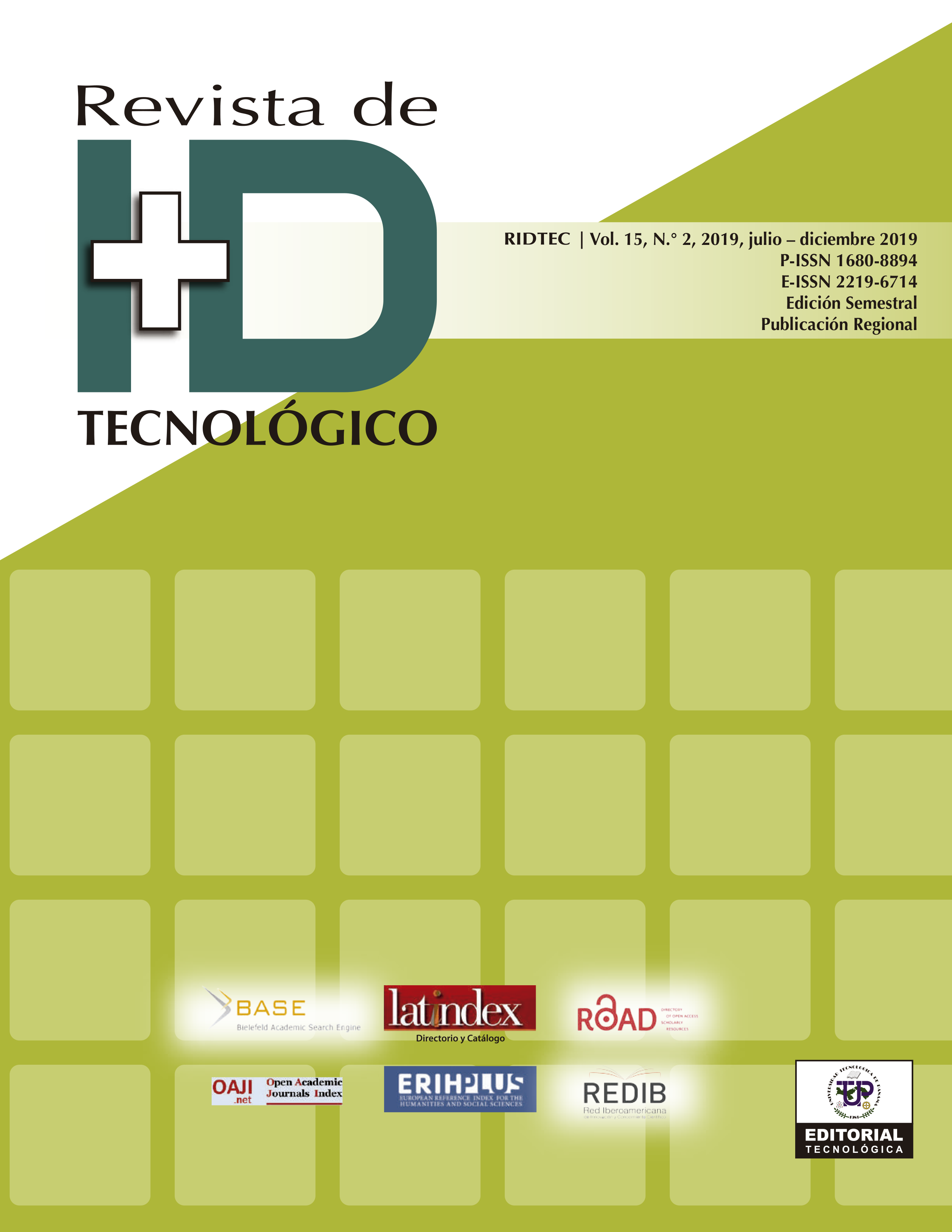Análisis biomecánico del pie protésico Bioc-dm2
##plugins.themes.bootstrap3.article.main##
Publicado: Jan 31, 2019
Resumen
Walking is one of the aspects directly compromising human wellbeing, as it has a physical and emotional impact in daily life.
For this study, we delve into the challenge of improving some walking conditions in a patient suffering lower limb loss, specifically at transtibial
or transfemoral levels. Given that our purpose was the analysis, design and manufacture of a lower-limb prosthetic component, which fills the needs
for functionality, it became necessary to build a foot with all the quality standards associated to each and all movements required to form the
complex fundamental pattern of walking. Besides, this foot should also easily endure weight, daily use and physical characteristics of the patient
object of this study. When performing physical validation and during human walk, a proper response is observed in terms of mechanics, materials
and dynamics of the component, thus making evident proper construction and assembly. On the other hand, it is feasible that design and verification
of the component provided a competitive element, as compared to existing elements currently in the market. The previous situation generated the
need for verification from the National Institute for Medications and Food (INVIMA), as well as the revision of the use replying device, for
component verification, in accordance with ISO 10328.
Palabras clave
Biomechanical, Gait analysis, Foot, Prosthesis, Transfemoral.Descargas
##plugins.themes.bootstrap3.article.details##
Citas
(2) L. E. C. Bravo, J. A. T. Ortiz, and L. F. V. Tamayo, "Análisis Biomecánico de Marcha Humana a Través de Técnicas de Modelaje," Entre Ciencia e Ingeniería, no. 12, pp. 29-35, 2014.
(3) C. E. Shell, A. D. Segal, G. K. Klute, and R. R. Neptune, "The effects of prosthetic foot stiffness on transtibial amputee walking mechanics and balance control during turning," Clinical Biomechanics, vol. 49, pp. 56-63, 2017.
(4) S. Debta and K. Kumar, "Biomedical Design of Powered Ankle-Foot Prosthesis–A Review," Materials Today: Proceedings, vol. 5, no. 2, pp. 3273-3282, 2018.
(5) C. L. McDonald, P. A. Kramer, S. J. Morgan, E. G. Halsne, S. M. Cheever, and B. J. Hafner, "Energy expenditure in people with transtibial amputation walking with crossover and energy storing prosthetic feet: A randomized within-subject study," Gait & posture, vol. 62, pp. 349-354, 2018.
(6) A. D. Segal, M. S. Orendurff, J. M. Czerniecki, J. Schoen, and G. K. Klute, "Comparison of transtibial amputee and non-amputee biomechanics during a common turning task,"Gait & posture, vol. 33, no. 1, pp. 41-47, 2011.
(7) J. Hernández, L. A. Parra, and G. Mendieta, "Analysis and design of transtibial prosthesis," in Electrical, Electronics Engineering, Information and Communication Technologies (CHILECON), 2017 CHILEAN Conference on, 2017, pp. 1-5: IEEE.
(8) J. A. H. Martin, L. A. P. Piñeros, C. A. P. Pinzón, O. H. B. Peña, J. A. R. Gutiérrez, and P. E. G. Benavides, "Diseño y manufactura de pie Protésico," in Memorias de Congresos UTP, 2017, pp. 127-131.
(9) A. F. Mak, M. Zhang, and D. A. Boone, "State-of-the-art research in lower-limb prosthetic biomechanics-socket interface: Jhon Hernandez Martin | Oscar Heli Bejarano | Edwin Yamith Martínez | Luis A. Parra Piñeros | Jairo Alberto Romero | Fran Eduard Perez | Phillipe Meziat CastroRIDTEC | Vol. 15, n.° 1, enero - junio 2019.85
a review," Journal of rehabilitation research and development,vol. 38, no. 2, pp. 161-174, 2001.
(10) C. Lunsford, G. Grindle, B. Salatin, and B. E. Dicianno, "Innovations with 3-dimensional printing in physical medicine and rehabilitation: a review of the literature," PM&R, vol. 8, no. 12, pp. 1201-1212, 2016.
(11) J. A. Kent, N. Stergiou, and S. R. Wurdeman, "Dynamic balance changes within three weeks of fitting a new prosthetic foot component," Gait & posture, vol. 58, pp. 23-29, 2017.
(12) D. Rusaw and N. Ramstrand, "Sagittal plane position of the functional joint centre of prosthetic foot/ankle mechanisms," Clinical Biomechanics, vol. 25, no. 7, pp. 713-720, 2010.
(13) J. D. Ventura, G. K. Klute, and R. R. Neptune, "The effect of prosthetic ankle energy storage and return properties on muscle activity in below-knee amputee walking," Gait & posture, vol. 33, no. 2, pp. 220-226, 2011.


